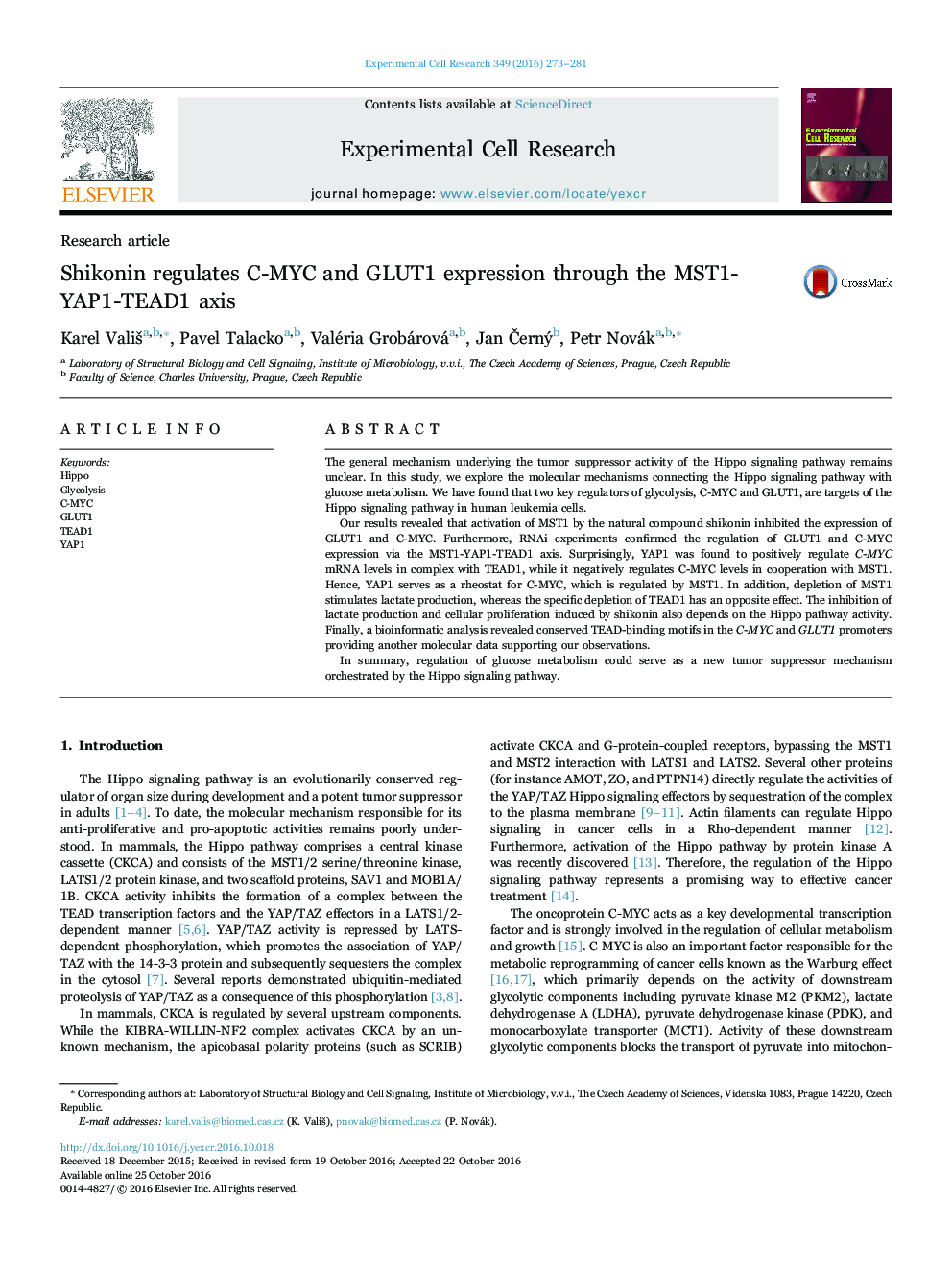| Article ID | Journal | Published Year | Pages | File Type |
|---|---|---|---|---|
| 5527324 | Experimental Cell Research | 2016 | 9 Pages |
â¢Shikonin inhibits C-MYC and GLUT1 expression in MST1 and YAP1 dependent manner.â¢YAP1-TEAD1 interaction activates C-MYC and GLUT1 expression.â¢MST1 in cooperation with YAP1 inhibits C-MYC and GLUT1 expression.â¢MST1-YAP1-TEAD1 axis regulates lactate production by leukemic cells.â¢MST1 and YAP1 proteins block proliferation of leukemic cells.
The general mechanism underlying the tumor suppressor activity of the Hippo signaling pathway remains unclear. In this study, we explore the molecular mechanisms connecting the Hippo signaling pathway with glucose metabolism. We have found that two key regulators of glycolysis, C-MYC and GLUT1, are targets of the Hippo signaling pathway in human leukemia cells.Our results revealed that activation of MST1 by the natural compound shikonin inhibited the expression of GLUT1 and C-MYC. Furthermore, RNAi experiments confirmed the regulation of GLUT1 and C-MYC expression via the MST1-YAP1-TEAD1 axis. Surprisingly, YAP1 was found to positively regulate C-MYC mRNA levels in complex with TEAD1, while it negatively regulates C-MYC levels in cooperation with MST1. Hence, YAP1 serves as a rheostat for C-MYC, which is regulated by MST1. In addition, depletion of MST1 stimulates lactate production, whereas the specific depletion of TEAD1 has an opposite effect. The inhibition of lactate production and cellular proliferation induced by shikonin also depends on the Hippo pathway activity. Finally, a bioinformatic analysis revealed conserved TEAD-binding motifs in the C-MYC and GLUT1 promoters providing another molecular data supporting our observations.In summary, regulation of glucose metabolism could serve as a new tumor suppressor mechanism orchestrated by the Hippo signaling pathway.
Graphical abstractDownload high-res image (220KB)Download full-size image
